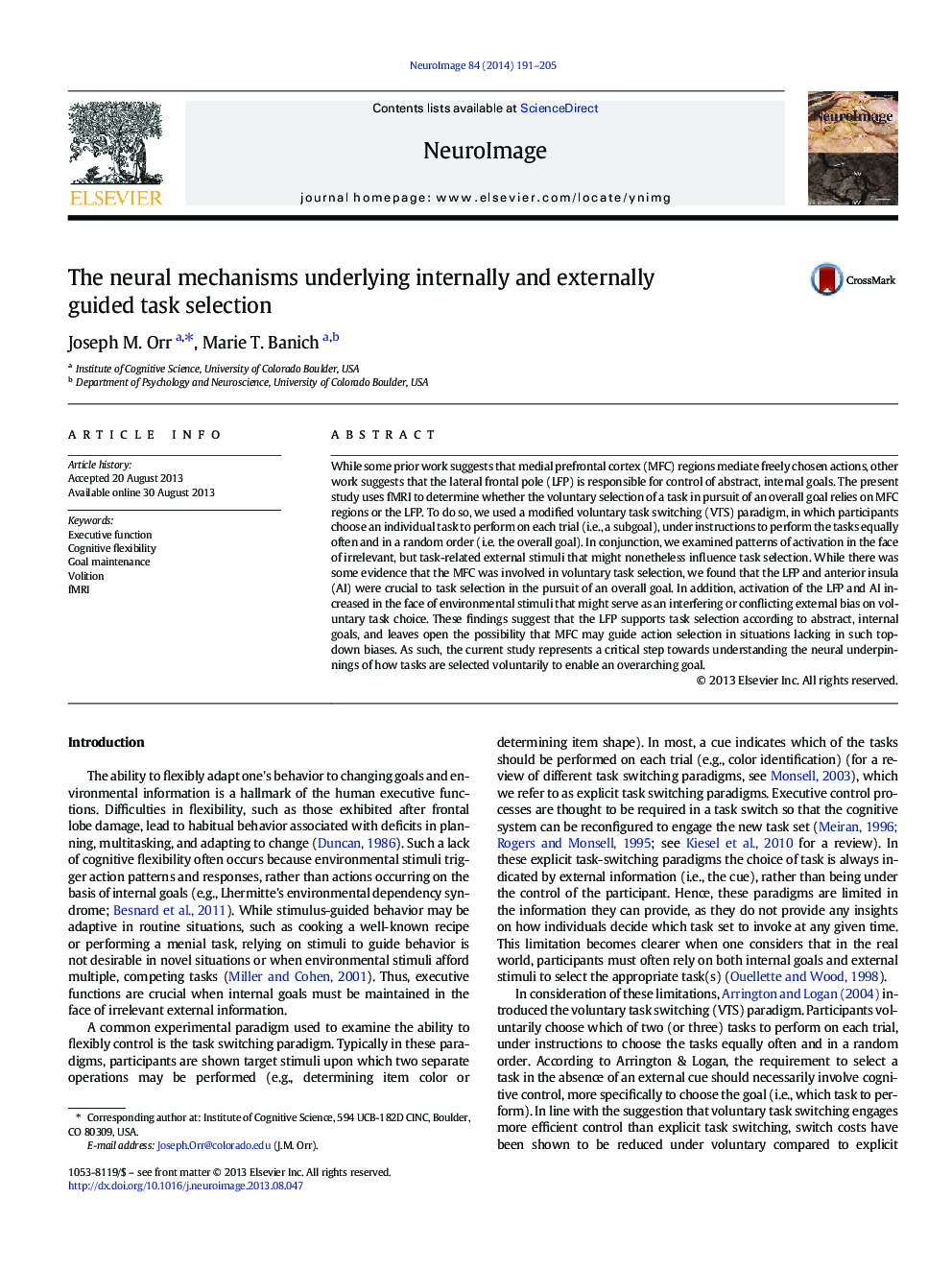| کد مقاله | کد نشریه | سال انتشار | مقاله انگلیسی | نسخه تمام متن |
|---|---|---|---|---|
| 6028418 | 1580920 | 2014 | 15 صفحه PDF | دانلود رایگان |
• We investigated the neural mechanisms that underlie voluntary task selection.
• Voluntary task choices were compared to explicit, cued task trials.
• Voluntary task choices were associated with activation in frontal pole and insula.
• Frontal pole was involved in overcoming distraction on choices.
While some prior work suggests that medial prefrontal cortex (MFC) regions mediate freely chosen actions, other work suggests that the lateral frontal pole (LFP) is responsible for control of abstract, internal goals. The present study uses fMRI to determine whether the voluntary selection of a task in pursuit of an overall goal relies on MFC regions or the LFP. To do so, we used a modified voluntary task switching (VTS) paradigm, in which participants choose an individual task to perform on each trial (i.e., a subgoal), under instructions to perform the tasks equally often and in a random order (i.e. the overall goal). In conjunction, we examined patterns of activation in the face of irrelevant, but task-related external stimuli that might nonetheless influence task selection. While there was some evidence that the MFC was involved in voluntary task selection, we found that the LFP and anterior insula (AI) were crucial to task selection in the pursuit of an overall goal. In addition, activation of the LFP and AI increased in the face of environmental stimuli that might serve as an interfering or conflicting external bias on voluntary task choice. These findings suggest that the LFP supports task selection according to abstract, internal goals, and leaves open the possibility that MFC may guide action selection in situations lacking in such top-down biases. As such, the current study represents a critical step towards understanding the neural underpinnings of how tasks are selected voluntarily to enable an overarching goal.
Figure optionsDownload high-quality image (227 K)Download as PowerPoint slide
Journal: NeuroImage - Volume 84, 1 January 2014, Pages 191–205
